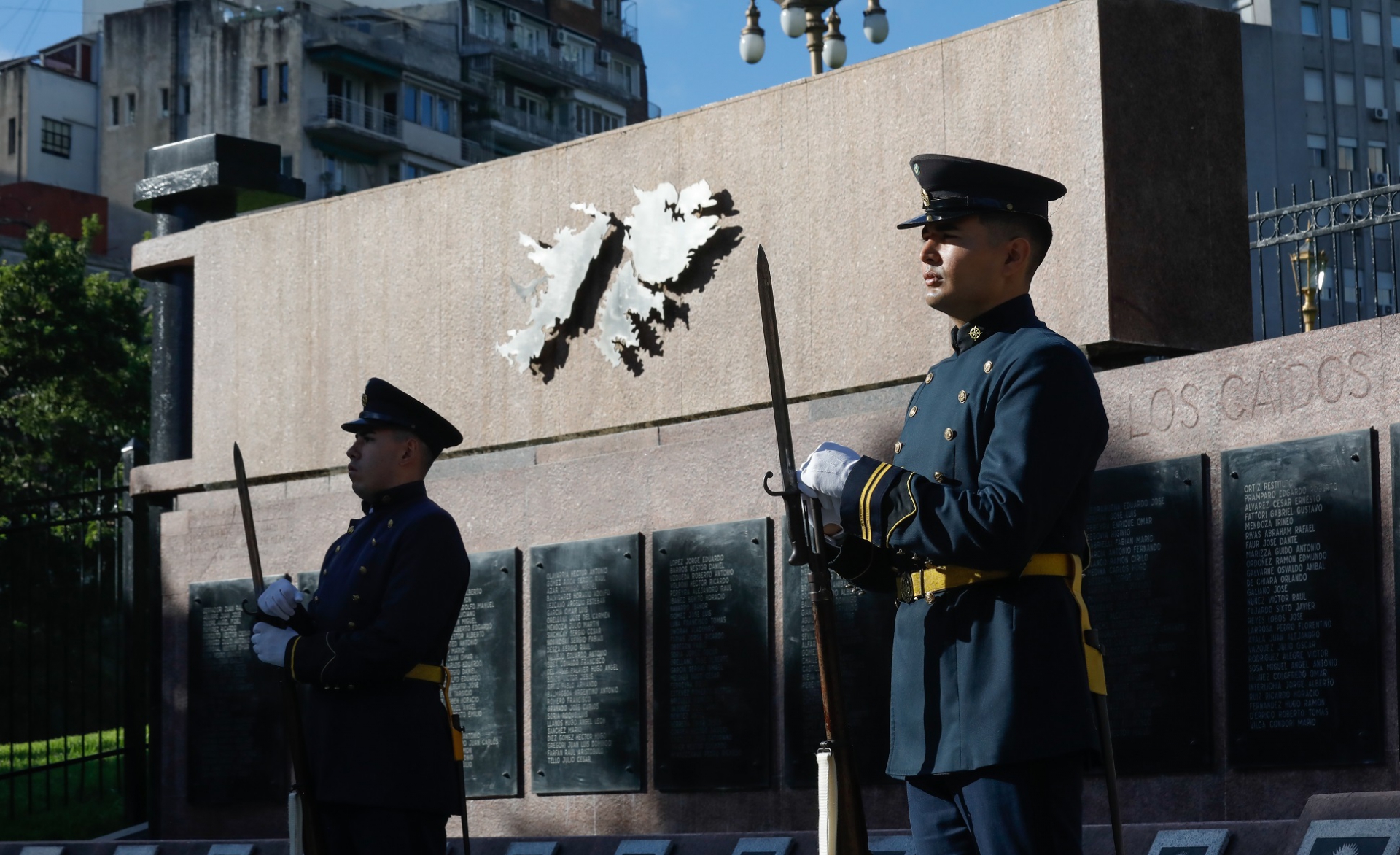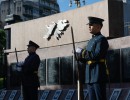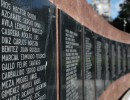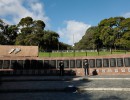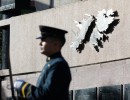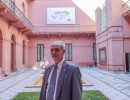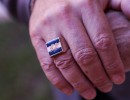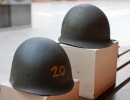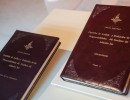Today, 2 April, the Day of the Veterans and the Fallen in the Malvinas War, we pay tribute to those who bravely defended Argentine sovereignty in the Argentine islands of the South Atlantic. This date was chosen because on that day in 1982, the Argentine Armed Forces landed on the Malvinas Islands, fighting for the recovery of the territory, seized by British forces in 1833.
42 years after the conflict, we talked to Ricardo Ocaña, Malvinas War Veteran, who currently works in the Human Resources Department of the Military House in Casa Rosada.
Like most conscripts at the time, Ricardo was 19 years old when he embarked to join the combat units of the Argentine Armed Forces deployed in the theatre of operations. "On 2 April 1982, while we were in Puerto Belgrano, we received the news that Argentina had taken the island by assault with great skill and certainty. By 12 April we were informed that we had to embark. It was in a C-130 aircraft, the largest that existed at the time. I couldn't explain in words what I felt at that moment... like being useful in a cause and in an incomparable feat. Argentina had never been at war before and it was the moment to show what we were conscripting for. Many of my comrades were afraid to go and feared they would never see their families and loved ones again," recalls Ocaña, who before entering the Mandatory Military Service was already working as a messenger at the Casa Rosada. "I wrote a letter to my parents to tell them that I was going to be transferred... that they were going to change my destination, but I didn't tell them that I was going to Malvinas to defend our homeland, I didn't want to tell them so as not to worry them," Ocaña says.
On the island, Ocaña ended up as a stretcher-bearer although he had been trained as a gunner and sniper. His days in the Malvinas were spent searching for the wounded and dead on the front, second and third lines. "In the morning we would go out in a truck - which was a kelper - to look for bodies - dead or alive - in the combat sites and take them to the Malvinas Military Internment Centre (C.I.M.M.), which was a collection of conscripts and officers".
It is well known that in wartime situations, armaments and food are vital issues. The Malvinas was no exception and, after the war, it was one of the major targets of criticism. Ricardo recalls stealing a truck so that his company could feed itself: "We were resting one night and a naval captain, a doctor, who had a very high rank, showed up to talk to a conscript and told me and two comrades that we had to go and steal food because the hospital was running out of supplies due to the number of wounded. Carrying it out was life-threatening because it is well known that, in war, you can't steal, especially not food. I agreed on the condition that half of what we got would go to my company. There were three trucks. The first was inside a kelpers' station and there was a lot of Argentinian food there. I remember that I managed to take out a 50-kilo bag of yerba mate, sugar, tins of corned beef, tins of quince and sweet potato, crates of jams, noodles. At some point you could tell that the captain had already done his intelligence because we were able to get in and take out the food, we had to go back and forth 50 metres with each item and load it onto another truck. The second truck was in another, smaller one, which had wine, cigarettes, chocolates. The third truck was also small, I got whisky and other things. I stayed there surrounded by militiamen and when someone asked me what I was doing there, I told them I was waiting for the captain. At one point the captain signalled me and someone came from behind and opened the door... And I started to grab everything that was there. We loaded the truck and when the militia realised they were there, they started shooting at us, not to kill us, but as if they were acting so that there would be a record of what had happened".
Towards the end of the war, the civilian-military government promoted a disinformation campaign to hide the events that were taking place on the Islands. Ricardo tells the story in his own words: "One day a Kelper house was blown up by so many bombs fired from the ships, and in the rubble we found a radio. The only thing we found was Radio Colonia, which broadcast in Spanish and said 'the truth': 'Argentina is winning', and in reality we were getting our asses kicked, let's say. We were watching how they attacked the track.... Bullshit, it was all bullshit, but we couldn't say anything because we didn't have a voice. We soldiers were not authorised or qualified to give notes because the memories inside hit you very hard, so some time goes by, a year, ten years, and only then can you speak. I know people who still can't talk, and more than 40 years have passed and they can't talk about Malvinas, let alone the memories of the things, the situations that happened there because it has hit them very hard, especially those who went to the front, killed another soldier or saw their comrade die and bleed to death next to them. That is even worse.
The commemoration of 2 April as the Day of the Veterans and the Fallen in the Malvinas War was established by law n° 25.370 on 22 November 2000 and declared official on 15 December of the same year. "For me the importance of remembering the 2nd of April is that citizens do not forget that there were boys who, right or wrong, went to give their blood. And they got their blood up to the marrow to defend a piece of land that Argentina wanted. And those boys are men today, there are many who are no longer here. So I think the new generations need to know that there was a war. And, for that matter, it is a modern war. Although Argentina did not have the means of a modern war. We had the FAL and they came with M-16s, with infrared telescopic sights, and we didn't even have binoculars. It was an uneven war. And what we ask is that, at least those who are here today, should be able to tell their stories so that people don't forget them. The worst thing for someone who is on this side is that people forget them. And beyond that, people have to know the history, not so much from books or from what governments say, but from the people who were there.
On Monday 14 June 1982, Argentina formally surrendered and thus ended the Malvinas War, which had begun 74 days earlier, on 2 April. Some 649 Argentines died during the war, giving their lives for their country.
There is another chilling fact: it is estimated that dozens of veterans have taken their own lives in recent years, although there is no concrete official data on the subject. This is due to the poor treatment they have received from successive national governments and the poor economic, social and support conditions they have been given over the years.
Every 2 April we remember and recognise the sacrifice, courage and commitment of the veterans who gave their lives for their country. Their legacy lives on in the collective memory of our country. In the context of the 42nd anniversary of the South Atlantic conflict, we ratify the claim for the exercise of full Argentine sovereignty over the Malvinas Islands, South Georgia, South Sandwich Islands and the corresponding maritime areas.
Symbols of homage in the Casa Rosada
The Patio de las Malvinas Argentinas, located in the Casa Rosada, is a symbol of memory and homage. Inaugurated on 2 May 2012, on the occasion of the thirtieth anniversary of the sinking of the cruiser ARA General Belgrano, this space houses one of the seven flags of Operation Condor. This flag has a history full of courage and determination, linked to the episode that took place in September 1966 in which a group of 18 young Argentine militants, led by Dardo Cabo and María Cristina Verrier, diverted an Aerolíneas Argentinas plane from its route to land it on the Malvinas Islands, where it was hoisted for 36 hours. In the upper left corner of the courtyard is a judicial certification validating that this flag was delivered by Dardo Cabo to the governor of the national territory of Tierra del Fuego, Antarctica and South Atlantic Islands, on 1 October 1969, when he was arrested.
The Casa Rosada Museum exhibits two helmets belonging to soldiers who took part in the Malvinas War, and the Rattenbach Report commissioned in September 1983 by the military junta and produced by the Commission for the Analysis and Evaluation of Responsibilities in the South Atlantic conflict.
